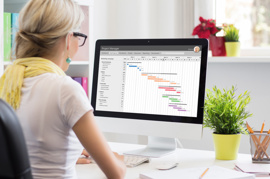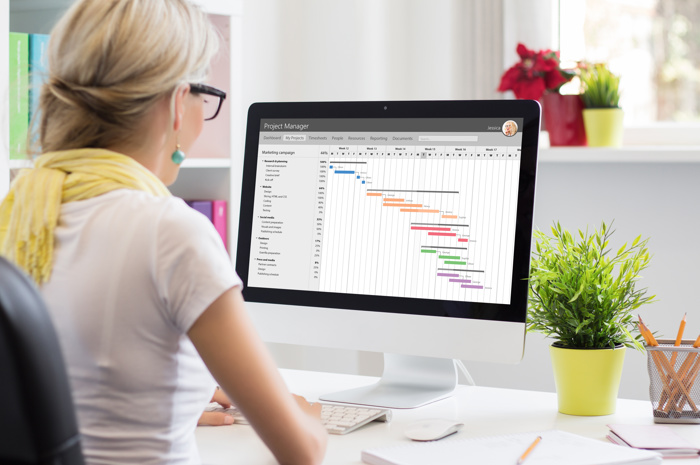Thinking about setting up a business but not sure where to start? A lot of people choose to begin their business as a sole trader, which means that they are self-employed. However, as your trade grows, you might be inclined to incorporate your business and set up a limited company instead! This may sound like a daunting task, but we will break it down for you into simpler steps below.
What is a Sole Trader?
A sole trader is someone who is self-employed; meaning that they run their own business and work for themselves. You are required by HMRC to set yourself up as a sole trader if you have earned more than £1,000 from self-employment activities between 6th April 2022 and 5th April 2023 (or for the tax year that applies to your return), if you need to prove that you’re self-employed, or if you want to make voluntary Class 2 National Insurance payments to help you qualify for benefits.
In order to set yourself up as a sole trader, you have to register for the Self-Assessment. You can do this
here. Please note that you must set up an account and register for the Self-Assessment by October 5th if you are required to complete a Self-Assessment tax return for the period. For example, if you are required to file a tax return for the period covering 5th April 2023 to 6th April 2024, you will need to register by 5th October 2024 in order to inform HMRC that you need to file a tax return and have not sent one previously.
What is a Limited Company?
A
limited company is a separate entity from the business owner themselves. Having the term ‘Limited’ as part of your company name means that you have incorporated your business as a limited company. This can be quite desirable for business owners, as having a limited company means having limited liability. So, assuming there were no fraudulent activities involved, you will not be personally liable for any of the financial losses that the company has made, which offers you more protection than as a sole trader. Additionally, if you were interested in gaining some investments or taking out loans, you are more likely to secure these when you are requesting them on behalf of a business, rather than on behalf of yourself, personally.
So, why would I want to change from a Sole Trader vs Limited Company?
1. Reduces your personal liability
As previously mentioned, the main benefit of switching from a sole trader to a
limited company is that it offers you more protection against potential financial struggles that your company could endure. As a sole trader, you are responsible for paying all the debts and liabilities that your business has accrued, even if your company is struggling. However, with a limited company, the risk is much lower since you, and any other shareholders, will only be liable up to the amount of the value of their shares. Additionally, if your business is failing and you cannot pay back loans or are in a lot of debt, the directors of a limited company are less likely to be forced to give up their personal assets, and instead, just the assets of the company will be seized, if necessary.
This is in extreme circumstances; however, it is important to think about these things when deciding between becoming a sole trader or incorporating your business as a limited company.
2. Creates a proper business profile for customers and investors
Another benefit is that by incorporating your business and giving it that 'Limited Company' title, it makes the company appear more credible, and might inspire confidence in suppliers or investors and might attract greater partnerships for your business. Furthermore, it is also useful to have an established company name when selling products and services to customers, as someone is more likely to purchase something from an incorporated business, rather than from a sole trader, as it may give off a perception that the business is more professional and reliable.
Additionally, if you have already set up your business as a sole trader and have made great connections with customers, suppliers, etc., and your business expands, it is beneficial to incorporate your company sooner rather than later so that your company name is secure. No two limited companies can have the same name, so it is important to be aware of this when switching from a sole trader to incorporating your business as a limited company, or it is good to think about the long-term effects of the name when you are setting up a business up as a sole trader.
3. Taxation reliefs
There are different tax rates for both personal tax and corporation tax. Both tax rates are determined by your taxable income, however, the rates for personal tax are much greater than the rates for corporation tax, as there are taxation relief schemes which are available for companies, to encourage them to invest in their business.
There are four bands for individual income tax, which are the personal allowance, basic rate, higher rate, and additional rate. The personal allowance is the allowance that each individual is entitled to without being charged tax on it; which is £12,570, and the tax rate is at 0%. The basic rate applies to taxable income between £12,571 and £50,270, and the tax rate is at 20%. This means that if your taxable income is £35,000, then the amount of that you are charged tax on is £22,430 (which is £35,000 - £12,570), so the tax you pay is £4,486 (not including any other contributions, such as national insurance or pension). The higher rate applies to taxable income between £50,271 and £125,140, and the tax rate is at 40%. In this tax band, it works similarly to the basic rate, in that you are taxed on your income over £12,570, as your personal allowance still applies. The additional rate applies to income over £125,140 and is taxed at 45%, however, there is no personal allowance on this. This is all varying depending on your tax code, etc., but as a sole trader, you must pay these tax rates, based on your personal taxable income.
In general, there are two tax rates for corporation tax – one is the small profits rate at 19% (for companies with profits under £50,000) and the other is the main rate at 25% (for profits over £250,000). Once again, these are the general rates for corporation tax, however, there are many factors to consider which can change the tax rate that applies to your company. Now, you may be wondering what about companies with profits between £50,000 and £250,000? Well, this is where
marginal rate relief comes in. Marginal rate relief is a tax relief scheme introduced by HMRC in April 2023, which adjusts the tax rate per company depending on their taxable profits, the number of associated companies they have, and how many distributions they received during the period. Additionally, your company can claim research and development tax credits on qualifying expenditure, which means it will either reduce your corporation tax liability or you could even be due a payment from HMRC to compensate for your expenditure. Tax relief schemes were created by the government to encourage businesses to invest in themselves, and in turn, help the economy. However, sole traders do not reap these benefits as their tax rates are based on personal income tax rates.
4. Personal income flexibility
There are many ways you can receive money from the company, whether as a salary, dividends, loan, and more. However, as the director of your limited company, you have complete control over this. The first way you can pay yourself is through the director’s salary, or as a subcontractor (which is shown as an expense on your income statement); this can be whichever amount you believe is reasonable and can be either be done through a PAYE system, which deducts tax automatically, or by declaring your income on a self-assessment return. This means that you are self-employed by your company.
The second way that you can pay yourself as director, is through dividends. This is not shown as an expense on your income statement, and instead, is reflected only on your balance sheet as a reduction in the company’s capital and reserves. Although this isn’t shown as an expense for the company, it needs to be recorded on your personal self-assessment where you must declare any dividends payments, as these are taxed at a separate (lower) rate to the income tax. There are again, four tax rates for dividend income; personal allowance, the basic rate, the higher rate, and the additional rate. These are the same as the personal income tax rate bands because the tax rate you pay on your dividends is whichever tax band you are in for your income tax. So, for example, if you are in the higher rate tax band for personal income tax, then you are in the higher rate tax band for your dividends income. The personal allowance for dividends is £1000, and is taxed at 0%; the basic rate is taxed at 8.75%, the higher rate is taxed at 33.75%, and the additional rate is taxed at 39.35%.
The third way that you can receive money from your company is through a director’s loan – this means that it is only a temporary loan and you are expected to pay this back to your company over time. It is important to be cautious with these types of loans as it can end up being harmful to your company, as they are forced to pay tax on the loan that they give you, and can only claim it back once the loan is repaid in full. If the loan is never repaid, and written off instead, your company will lose that money and the tax they paid on it as they will not be able to claim it back. It is important to be aware of the consequences for your company when taking money out of it, whether as a salary or a loan.
What are the downsides to having a Limited Company?
The main downside to incorporating your business vs sole trader, is that there is a much larger responsibility when it comes to company administration. As the director of a limited company, you are expected to submit a confirmation statement and annual accounts to Companies House, and also a CT600 return with full accounts to HMRC for each accounting period - and that may not be all. This sounds like a lot, but we are here to help – please check out
this article from our Knowledge Base which breaks down which returns your company needs to make each year. Additionally, if you are struggling to understand how to complete your returns, as well as our self-filing service (where you complete the returns yourself), we offer a Managed Filing service, which is where you would provide us with an income statement and balance sheet (or a spreadsheet with your company’s income and expenditure for the accounting period), and one of our accounts specialists will complete the filings for you! Through our managed filing service, we can complete your CT600 with full accounts and also your annual accounts for Companies House. Once you are happy with your filings and approve them for submission, we submit them to HMRC and Companies House on your behalf. If this sounds like something you might be interested in, please check out our Managed Filing website,
Easy Digital Tax.
Furthermore, the process of incorporating your business can be a costly and timely affair, especially if it is your first time incorporating, as you may struggle to understand what steps are involved. Here is an article which breaks down these steps for you. You can even set up your
limited company directly through
Easy Digital Company for a smooth and hassle-free incorporation.
So, do I just need to incorporate my business as a Limited Company and I’m ready to go?
Not quite - you will also need to inform HMRC that you are stopping your self-employment (meaning that you are no longer a sole-trader). You can do this via the online form
here. You will then need to log in to your Government Gateway account and follow the steps. Please note, that you will need your national insurance number and UTR number at hand when completing this form.
This article is information only and has been prepared for general guidance on matters of interest only, and does not constitute legal, accounting, tax, investment or other professional advice or services. You should not act upon the information contained in this article without obtaining specific professional or legal advice. No representation or warranty (express or implied) is given as to the accuracy or completeness of the information contained in this article, and, to the extent permitted by law, Comdal Limited, its members, employees and agents do not accept or assume any liability, responsibility or duty of care for any consequences of you or anyone else acting, or refraining to act, in reliance on the information contained in this publication or for any decision based on it.





















